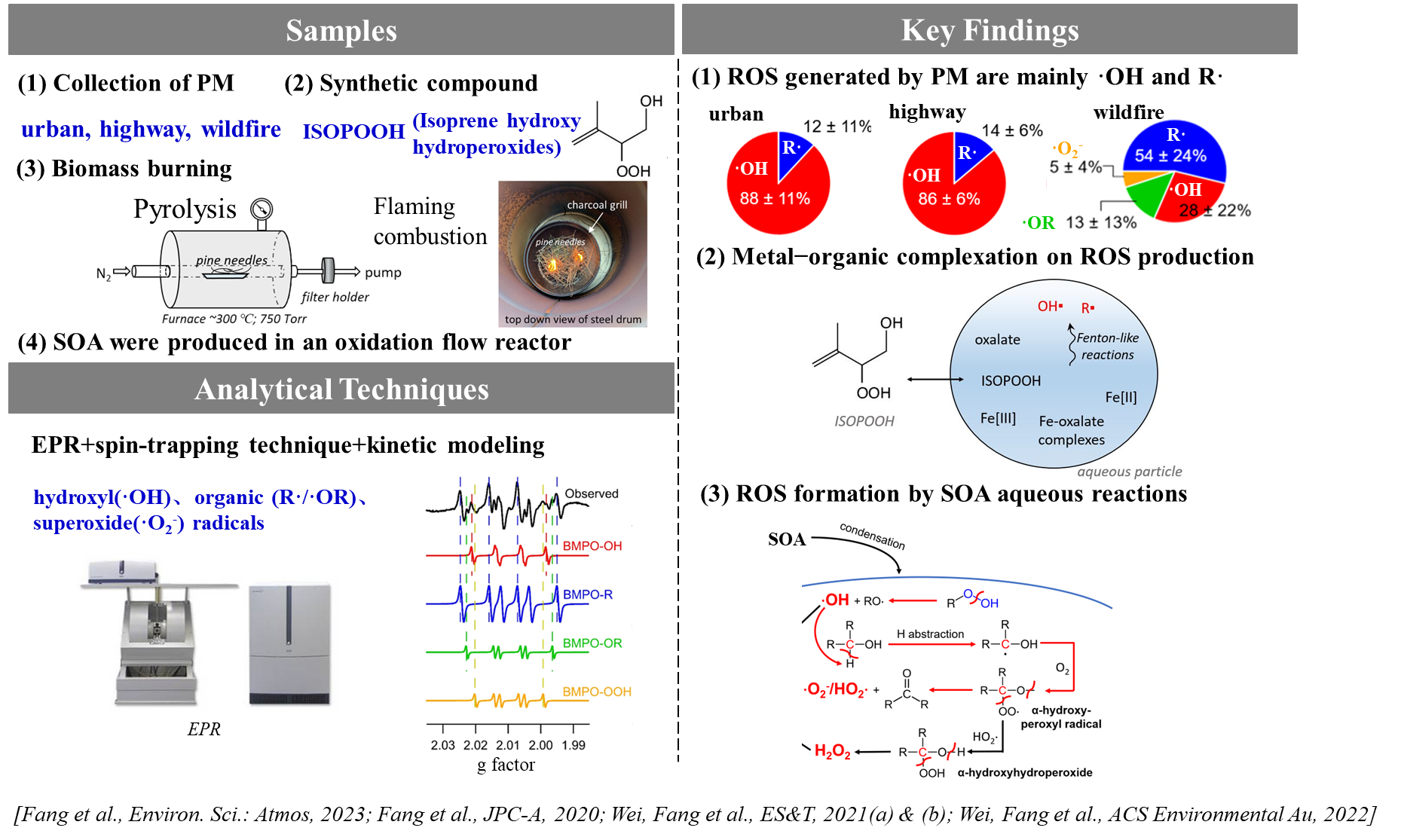Our Research
Oxidative Potential of PM
Through a self-developed oxidative potential semi-automated analysis system, we comprehensively analyzed the impact of PM emission sources, atmospheric processing, lung deposition (source-evolution-sink), and PM components on oxidative potential, and their relationship with cardiovascular and respiratory diseases. We found that oxidative potential may be a better health indicator than PM mass alone.

Selected publication
Fang, Ting, Vishal Verma, Josephine T. Bates, Joseph Abrams, Mitchel Klein, Matthew J. Strickland, Stefanie E. Sarnat, Howard H. Chang, James A. Mulholland, Paige E. Tolbert, Armistead G. Russell, and Rodney J. Weber. 2016. “Oxidative Potential of Ambient Water-Soluble PM2.5 in the Southeastern United States: Contrasts in Sources and Health Associations between Ascorbic Acid (AA) and Dithiothreitol (DTT) Assays.” Atmospheric Chemistry and Physics 16(6):3865–79. doi: 10.5194/acp-16-3865-2016.
Fang, Ting, Linghan Zeng, Dong Gao, Vishal Verma, Aleksandr B. Stefaniak, and Rodney J. Weber. 2017. “Ambient Size Distributions and Lung Deposition of Aerosol Dithiothreitol-Measured Oxidative Potential: Contrast between Soluble and Insoluble Particles.” Environmental Science & Technology 51(12):6802–11. doi: 10.1021/acs.est.7b01536.
Fang, Ting, Hongyu Guo, Linghan Zeng, Vishal Verma, Athanasios Nenes, and Rodney J. Weber. 2017. “Highly Acidic Ambient Particles, Soluble Metals, and Oxidative Potential: A Link between Sulfate and Aerosol Toxicity.” Environmental Science & Technology 51(5):2611–20. doi: 10.1021/acs.est.6b06151.
ROS generation by aqueous chemistry
By applying electron paramagnetic resonance, spin-trapping technique, and kinetic modeling, we revealed that the composition of ROS generated by PM in water varies depending on different sources such as traffic, urban areas, and wildfires. We proposed multiple mechanisms for the generation of ROS in aqueous particles via hydroxy hydroperoxides aqueous-phase decomposition, Fenton-like reactions, and peroxide-metal complexation reactions.

Selected publication
Fang, Ting, Brian Hwang, Sukriti Kapur, Katherine Hopstock, Jinlai Wei, Vy Nguyen, Sergey Nizkorodov, and Manabu Shiraiwa. 2023. “Wildfire Particulate Matter as a Source of Environmentally Persistent Free Radicals and Reactive Oxygen Species.” Environmental Science: Atmospheres. doi: 10.1039/D2EA00170E.
Fang, Ting, Pascale S. J. Lakey, Jean C. Rivera-Rios, Frank N. Keutsch, and Manabu Shiraiwa. 2020. “Aqueous-Phase Decomposition of Isoprene Hydroxy Hydroperoxide and Hydroxyl Radical Formation by Fenton-like Reactions with Iron Ions.” The Journal of Physical Chemistry A 124(25):5230–36. doi: 10.1021/acs.jpca.0c02094.
Cellular ROS release
Through the use of in vitro culture of RAW264.7 macrophages together with the combination of EPR and Diogenes chemiluminescence assays, we were able to simulate the effects of human exposure to quinone or isoprene SOA. Our findings indicated that superoxide released by macrophages through NADPH oxidase activation after exposure overwhelmed the superoxide formation by aqueous chemical reactions in the epithelial lining fluid, and thus caused oxidative damage on membranes.


